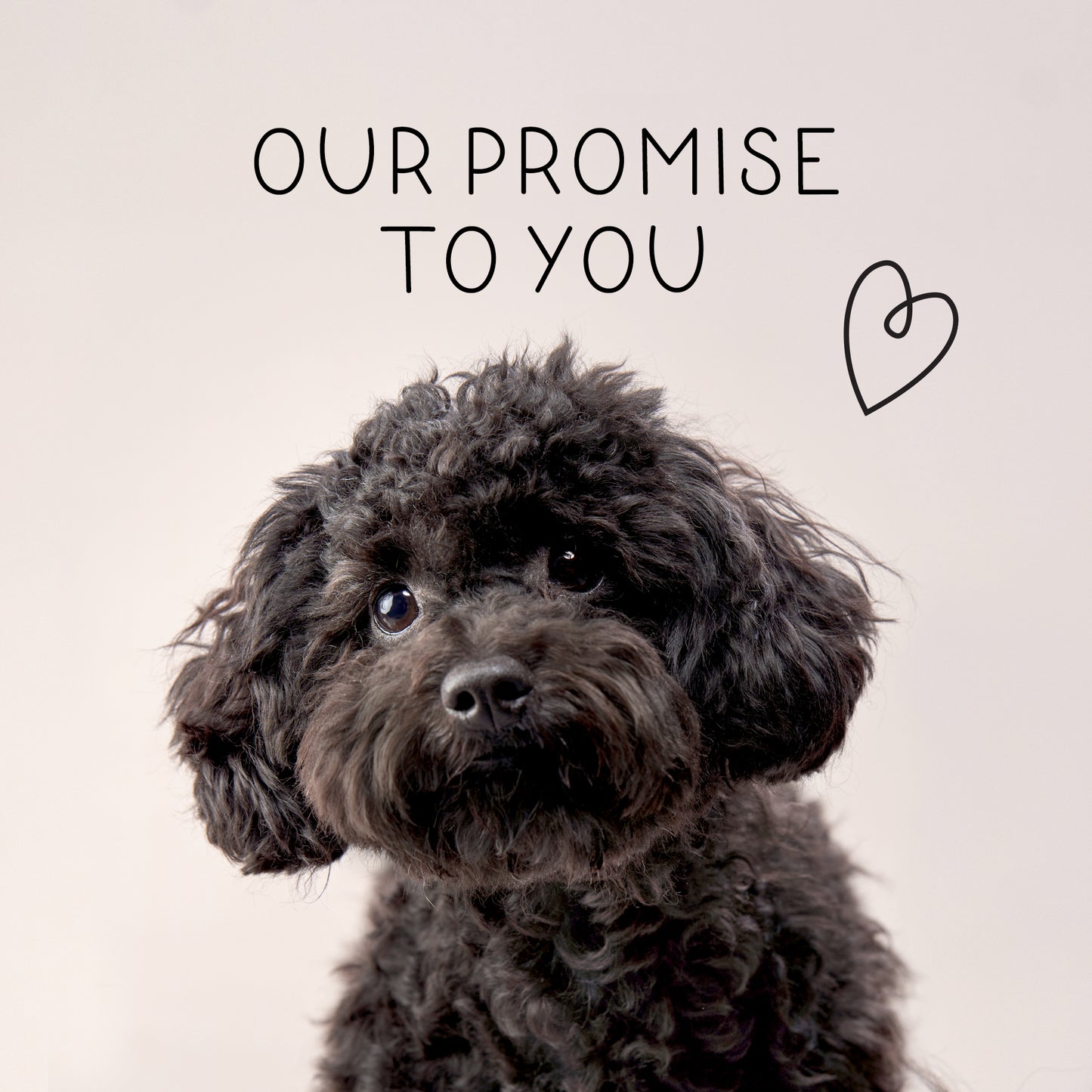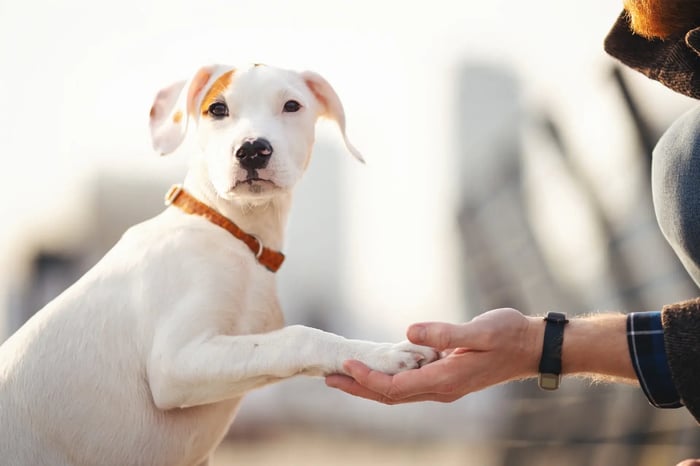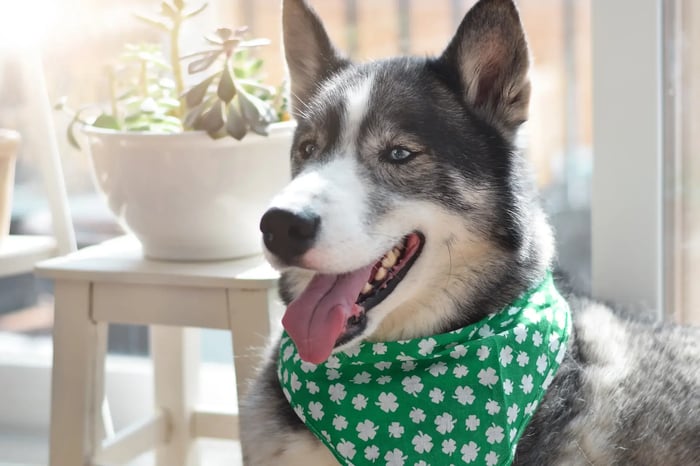The Importance of “Paw-sitive” Reinforcement: How Dopamine Plays a Crucial Role in Effective Dog Training
As someone who values the whole health and well-being of your dog, it’s only natural for you to want to assist your little (or big!) love in reaching its full potential. You probably even see a lot of yourself in your four-legged companion – and for good reason! A recent survey revealed that 70% of dog owners consider their canines to be their mini-me because of their similar personalities.
Knowing that you and your furry friend have a lot in common, a good rule of thumb when it comes to dog training is to treat your dog the same way you would want to be treated when learning something new.
So, take a few minutes to think about the teachers and mentors who made a significant impact on your life. Chances are that they were steady and secure people who knew how to motivate you through positivity, while also being honest with you and pushing you to step up your game when necessary.
If that sounds in line with how you like to be treated by teachers and mentors, then positive reinforcement training is going to be the right dog training strategy for you.
What Is Positive or “Paw-sitive” Reinforcement Training?
Positive reinforcement training is a dog training method that involves rewarding your dog for desired behaviors instead of punishing your dog for undesirable behaviors. You may already instinctually do this. For example, if you’ve ever instructed your dog to sit and then given your good boy or girl a treat after they sat down, that’s positive reinforcement. It’s a powerful way to shape or change your dog’s behavior because the reward makes it more likely that your dog will repeat the desired behavior in the future. Therefore, the next time you ask your dog to sit, your pup will remember the treat they got last time, and then sit again.
If you’re thinking this sounds like bribing your dog to get what you want, you wouldn’t necessarily be wrong. But hear us out because positive reinforcement dog training is actually based on sound scientific principles and a behavioral psychology concept called operant conditioning, which uses rewards and punishment to modify behavior.
So, let’s take a closer look at the science behind why positive reinforcement is an effective dog training method.
Dopamine and the Science Behind Positive Reinforcement Dog Training
Dopamine is a neurotransmitter, or chemical messenger, made in the brain that plays a key role in pleasure, motivation, and learning. Known as the “feel good” hormone, dopamine is part of our reward system and our dog’s. Whenever we, or our mini-me, experiences something rewarding or does something pleasurable, our brains release a lot of dopamine. We then, in turn, feel good, which leads us to pursue more of that good feeling.
It’s a cycle of motivation, reward, and reinforcement. Now that we understand how powerful dopamine is in shaping our dog’s behavior and learning process, let’s leverage this natural reward system to help our dog reach its full potential.
5 Tips for Effective “Paw-sitive” Reinforcement Training
The key to successful positive reinforcement dog training comes down to learning the things that motivate your dog most. While some dogs crave praise, others may prefer to play, receive a new toy, be pet, or get a treat. So, make sure to pay close attention to what motivates your dog throughout this process. And try these tips for an effective positive reinforcement dog training experience.
- Be Mindful of Reinforcement Timing: After your dog performs the desired behavior you requested, reward your dog immediately. This will create a strong association between the action and the reward. Also, remember that the positive reinforcement should be done enthusiastically and occur frequently.
- Be Consistent: Being consistent with your rewards and commands means always rewarding the desired behavior and not rewarding any undesired behaviors. For example, if your dog is acting out, don’t give your dog extra attention. This will then give your dog the message that if it acts out, it’ll get more attention. That’s obviously not the message you’re trying to convey. And when it comes to consistency in the household, if you live with family members or roommates, make sure that everyone in your home is using the same cues. Otherwise, your dog might get confused if you’re giving one message, but your roommate is giving a different one.
- Be a Good Communicator: Start with simple commands and then build up to more complex ones over time. Doing this will prevent you from overwhelming your dog. For instance, if you want your dog to get off the couch. Instead of using complete sentences and yelling something along the lines of, “You know you’re not supposed to be on the couch! What are you doing? Get off the couch right now!” Try to remain calm, gesture to your dog to get off the couch, and say, “Down” or “Off!”
- Be Patient: Since every dog learns at its own pace, it’s important to be patient with your dog and not rush the process. The same goes for you, too. Just because your dog is taking a little longer than you’d like to learn something that you’re teaching, it doesn’t mean that you’re doing something wrong. And make sure to celebrate all the little victories along the way!
- Be Creative with Rewards: We all know variety is the spice of life. So, to keep your dog engaged throughout the positive reinforcement training journey, make sure to mix up the types of rewards you offer based upon what motivates your dog.
Let’s use food treats as an example since food is one of the best ways to motivate your dog since it increases the level of dopamine in your dog’s brain. The key to motivating your dog through treats isn’t just simply feeding your dog though. It’s giving your dog a special treat. This means the treat can’t just be any food item. Instead, it has to be high-value food that your dog craves and truly wants.
The Crumps’ Naturals Training Collection features a variety of natural dog treats that are protein rich, perfectly portioned for any size dog, and only has 3 calories per treat. This means you can give your star student a Semi Moist Beef Mini Trainer on Monday, a Semi Moist Chicken Mini Trainer on Tuesday, and then mix things up on Wednesday with a Freeze-Dried Beef Liver Mini Trainer. Then you can give your dog a Semi Moist Duck Mini Trainer on Thursday and a Semi Moist Lamb Mini Trainer on Friday. Talk about variety! Feel free to mix and match on the weekends, as you’d like.
The best part about Crumps Naturals’ training treats are that they’re a perfect option for anyone doing positive reinforcement dog training since they have a taste your dog will love! Make sure to praise your dog before you give them the treat as a reward, too. This will help to encourage your dog on multiple levels and reinforce the positive behavior.
Learn more about how Crumps’ Naturals tasty, nutritious treats can help your dog reach its full potential so that it can live its best life!
--
Sources:
- https://swnsdigital.com/us/2022/04/majority-of-dog-owners-consider-their-pup-to-be-their-own-mini-me/#:~:text=Most%20dog%20owners%20know%20their,because%20they%20have%20similar%20personalities
- https://www.humanesociety.org/resources/positive-reinforcement-training#:~:text=Positive%20reinforcement%20training%20uses%20a,or%20changing%20your%20dog%27s%20behavior.
- https://onlinedogtraining.tobias-oleynik.com/dopamine-the-key-to-unlocking-your-dogs-potential-in-training/
- https://www.sportdogtrainingcenter.com/dopamines-role-dog-training/
- https://positively.com/dog-training/positive-training/using-food-in-training/#:~:text=Food%20has%20the%20power%20to,move%20towards%20the%20food%20reward
- https://www.verywellmind.com/what-is-positive-reinforcement-2795412
- https://www.akc.org/expert-advice/training/operant-conditioning-the-science-behind-positive-reinforcement-dog-training/
- https://www.outsideonline.com/health/training-performance/dog-training-principles-humans-can-learn-from/




















